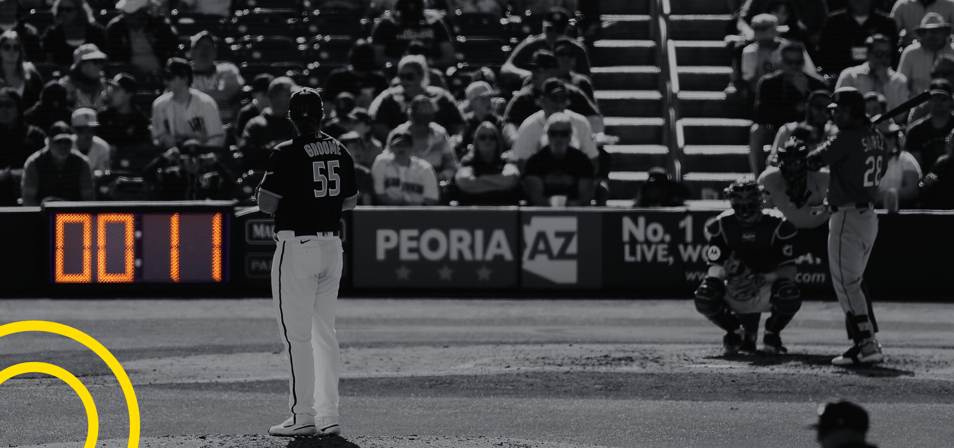
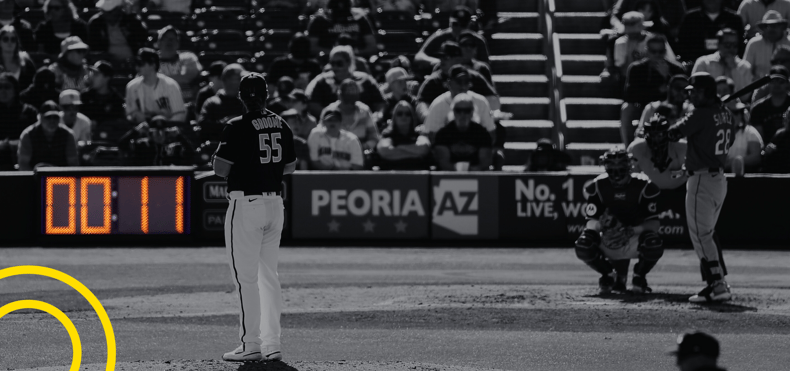
The world of sports marketing is evolving rapidly, and the MLB is no exception. With the introduction of new rules and regulations, brands and sponsorship executives are on the lookout for innovative ways to optimize exposures across broadcast, social media, and streaming platforms. In this blog, we'll explore the key changes in the MLB, including the use of jersey patches and helmet decals, LED vs Static stadium signage, and the introduction of the pitch clock. We'll also delve into the best practices for activating sponsor media value and enhancing brand visibility.
TUNE IN TO THE LIVE WEBINAR: LAUNCH OF THE 2023 STATE OF MLB SPONSORSHIP
New Sponsor Assets | Jersey Patch and Helmet Decals
One of the biggest changes in the MLB this season is the introduction of jersey patches and helmet decals. This new opportunity allows teams to showcase sponsor branding on the front of their jerseys, opening up a plethora of new sponsorship opportunities. While some fans might balk at the idea of ads on jerseys, for the brands involved, it’s a unique way to connect with fans and make an impression on a national scale. As marketers, it’s important to consider how we can optimize these placements across broadcast, social, and streaming platforms, and drive measurable ROI for our clients.
While sponsorship deals are still underworks, it’s estimated that MLB could see an aggregate average of between $450 million to $500 million annually for just sponsor patches.
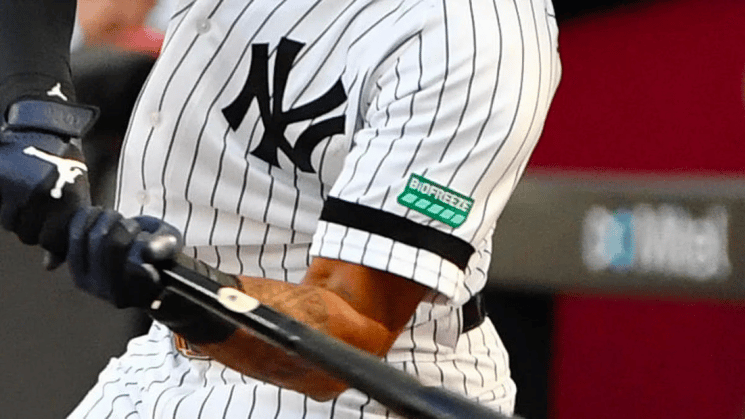
Moving from Static to LED Stadium Signage
Another major change in the MLB sponsorship landscape is the shift towards LED stadium signage. In the past, stadium signage was static, limiting the number of sponsors teams could showcase during a game. Now, with the introduction of LED boards, teams can display multiple sponsors throughout the game and offer unique advertising opportunities for both local and national brands. However, it is important to note that while LED signage offers many advantages, brands must ensure their messaging is concise, on-brand, and visually striking to capture fans’ attention.
One of the most crucial aspects of maximizing LED signage is space. Both physically and digitally, using the available space is essential, especially when it comes to generating higher values. As such, the outfield wall LED is a great example of both a large screen and sponsor creative that effectively uses the available space. Sports marketers need to consider the creative programming that will be used in these spaces and evaluate how to activate sponsorships in prime locations to maximize value.
The creative flexibility of LED signage is an opportunity and a challenge for all parties involved. While such signage is a blank canvas, it can also be overwhelming for sponsors and marketers. However, leveraging simple, bold creative with deeply contrasting color schemes will unlock the highest Media Value Percentage scores. It may be tempting to use this platform for various messaging and campaigns, but it can dilute the high-impact brand messaging it can deliver.
In a sense, the challenge of LED signage is to focus on the brand’s marketing goals and amplify that message through the channel while still keeping it visually appealing to the audience. It is critical to work closely with sponsors to understand their branding goals and to establish clear communication on how they should be promoted. By clarifying these goals, marketers can create LED signage that meets the needs of sponsors while still engaging audiences.
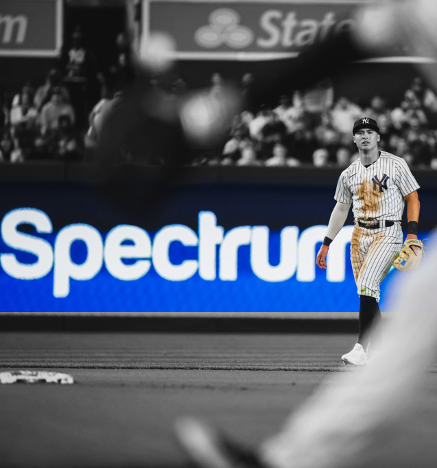
Introduction of the Pitch Clock:
While not directly tied to sponsorship, the introduction of the pitch clock in the MLB represents a sea change for the league and its players. The pitch clock has the potential to speed up gameplay, creating more opportunities for sponsors to engage with fans during commercial breaks and between innings. With shorter game times, advertisers can improve the efficiency of their activations and better capture viewers’ attention. Marketers should consider creating content that is optimized for these shorter time frames, such as six-second ads, and maximize engagement with fans during these breaks in the action.
The pitch clock is shaping the overall fan experience. With shorter games, fans are less likely to lose interest, resulting in higher viewership and engagement statistics. Shorter baseball games have been a trend for many years. It has been shown that games four hours or longer resulted in a steady decrease in viewership, making broadcasting less valuable to sponsors. Therefore, adopting the pitch clock rule is a great way to keep fans engaged and to increase broadcast value for sponsorship.
However, with shorter games comes the possibility of less airtime for sponsors to market their products. Shorter game times mean fewer opportunities for advertising on TV. Therefore, to accommodate this new rule, sponsor managers must get creative with advertising placements within the program. Sponsors must keep in mind that fans don't want cluttered ad placements disrupting their viewing experience, so subtle sponsor placements could provide more worth in a shorter time window.
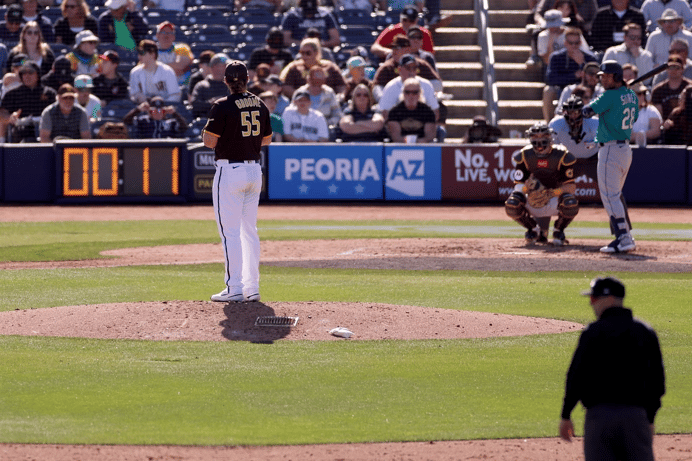
Best Practices for Activation
So, what are some best practices for activating sponsorships in the MLB today? First, we need to focus on integrating sponsor messaging seamlessly into the fan experience. This could include creating compelling social media content, partnering with influencers to drive reach, and crafting authentic experiences that truly resonate with MLB fans. Second, we should be leveraging data and analytics to measure the impact of our activations and continually optimize our strategies. Finally, we need to be creative and innovative in our approach, staying ahead of the curve and constantly pushing the boundaries of what’s possible in the MLB sponsorship landscape.
As the MLB evolves, so too must our approach to sponsorship activation. By staying up to date with the latest changes in the league, testing out new strategies, and constantly measuring results, we can ensure that our clients’ activations are consistently delivering value and resonating with fans. Whether it’s leveraging new sponsorship placements like jersey patches and helmet decals or designing campaigns that are optimized for faster gameplay, there’s never been a more exciting time to be a sports marketer in the MLB.
Be sure to catch the live webinar on June 21, 2023 for the unveiling of Relo Metrics’ new research on these changes in the MLB: 2023 State of MLB Sponsorship.